Music is another kind of collective experience worthy of looking at: a real-time collaboration where things are happening immediately. Sound is the shared space, not the instruments themselves (something worth remembering in the Physical Database World at CDG—maybe sound plays a role, somehow?). Still, laptops and current software still seem ill-suited despite their increasing ubiquity.
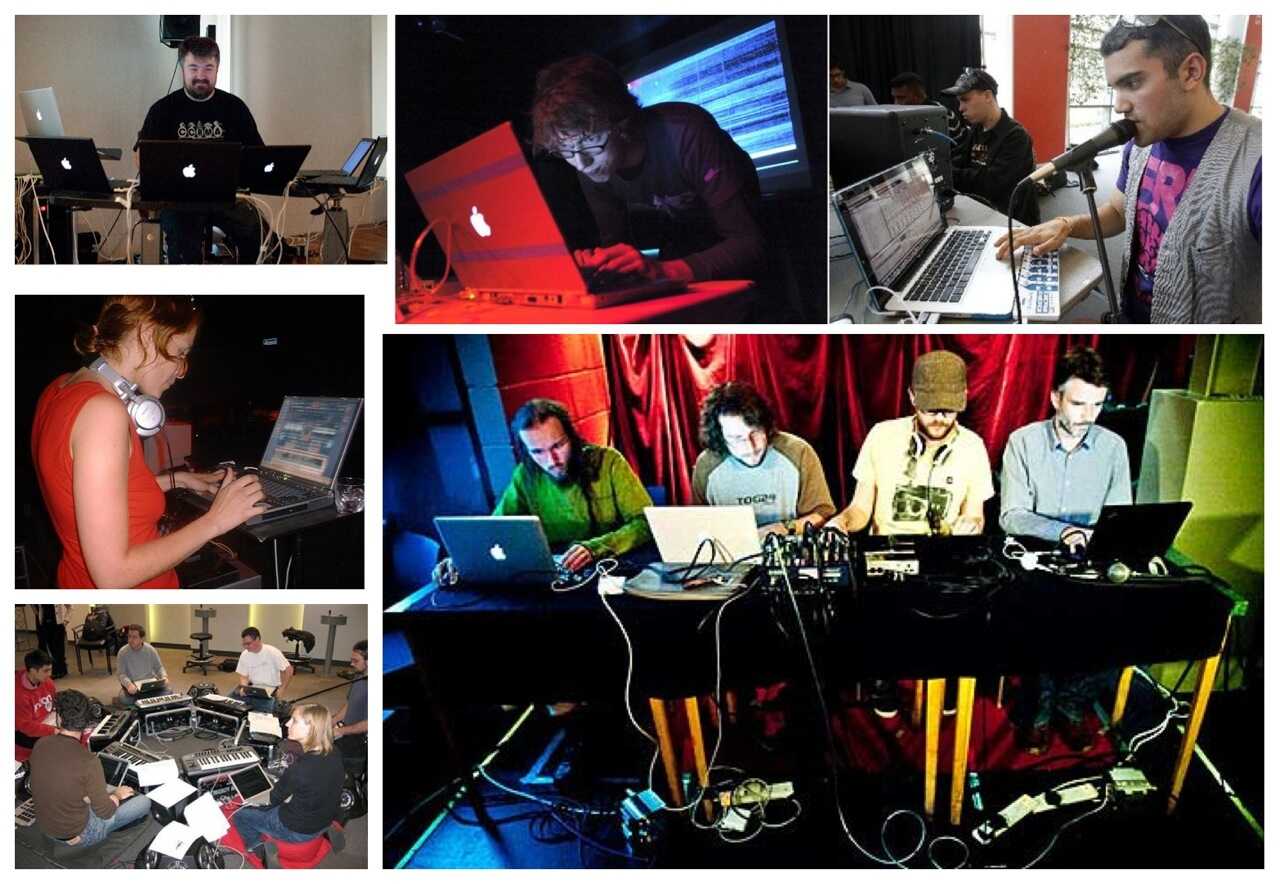
Laptop music is infamously dull on stage compared to more traditional instrumentation, so I found some photos of people playing real instruments. In either case, the musicians seem isolated from one another, focused on their own instruments, but their bodies are used very differently. The easiest way to describe the difference is that traditional instruments have a much larger dynamic range of physical expression—how far a hand moves up and down the neck of an instrument, how the player carries or wears the instrument, allowing more motion. Also, the sound itself, at least from the musicians’ perspectives, emanates from the instruments, not from distant speakers. The resonating bodies themselves are more free to roam the space, within limits.
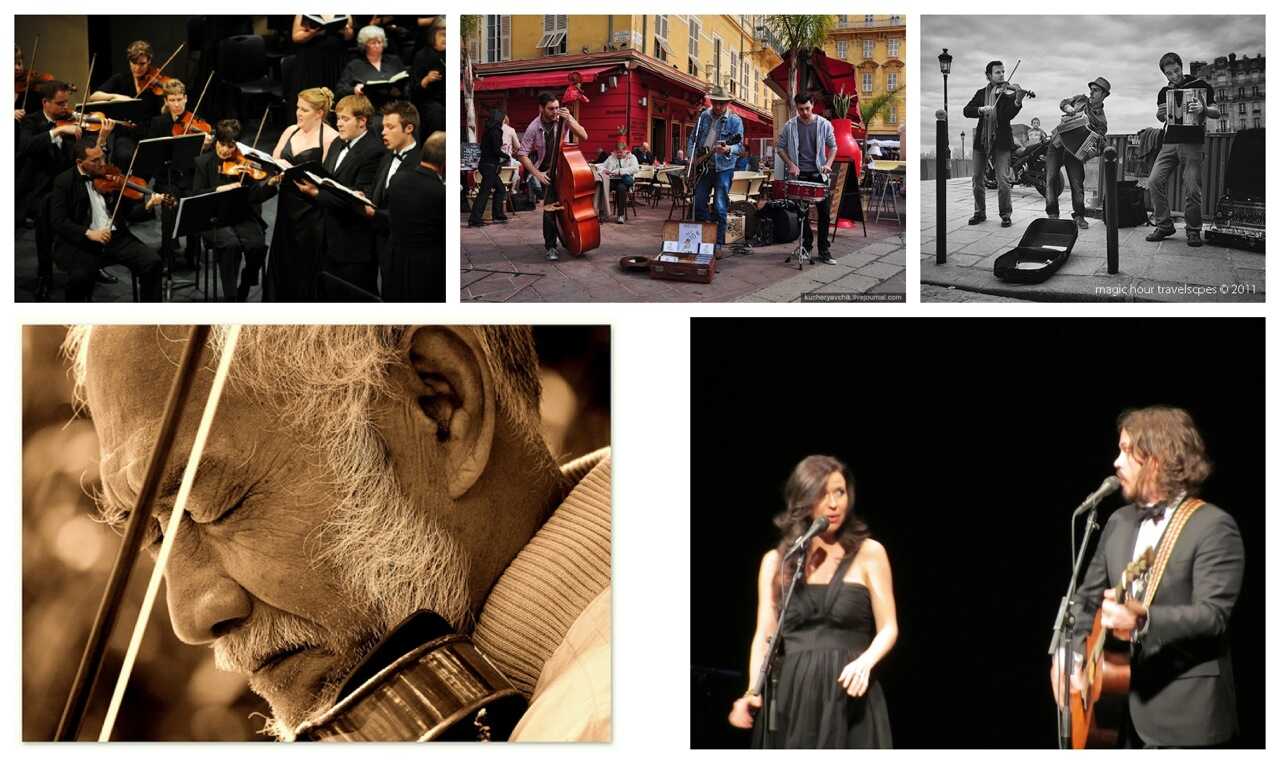
It’s also common to see musicians closing their eyes when they play—something that seems impossible when dependent on touch screens, the mouse, or a keyboard. Tactility is totally lacking. I also found a few images of musicians catching each other’s glance, thinking this would contrast with the self-absorption of laptop musicians, but these moments are often fleeting even in traditional performances.
I wondered… what are some forms of musical expression that laptops don’t lend themselves to? Here are some images from punk rock and heavy metal shows where a laptop would simply never fit in.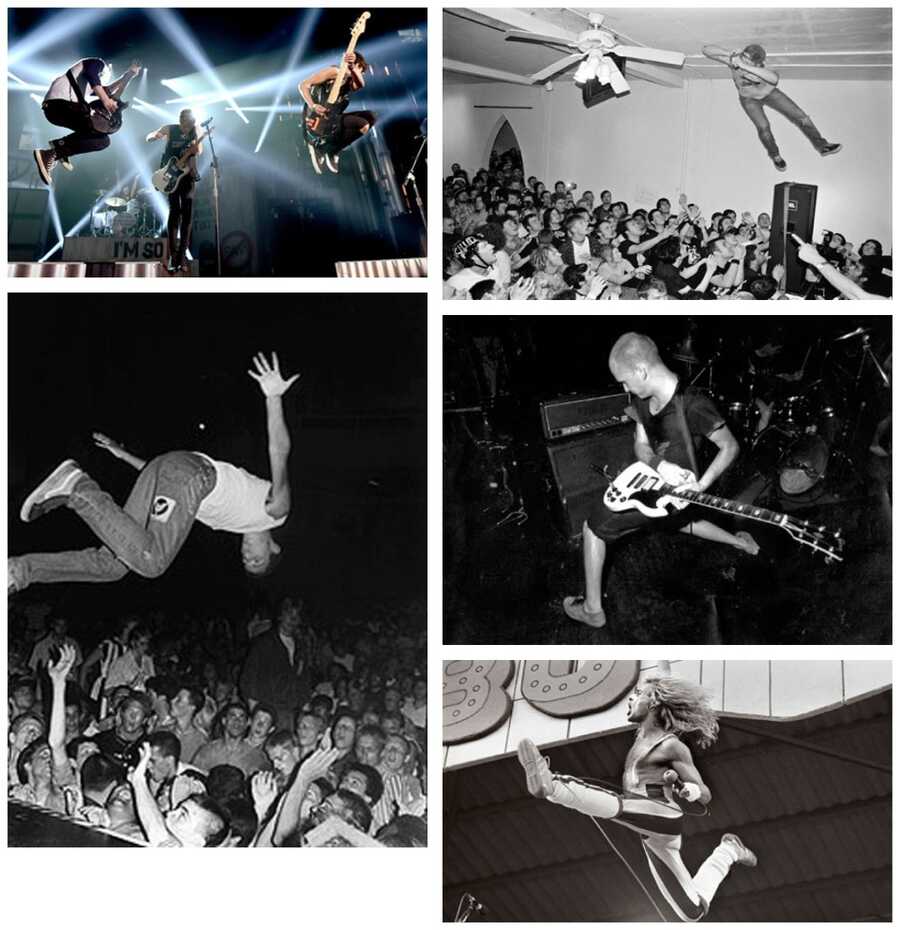
The closest I could find was a few videos of people destroying their laptops in homage to the infamous Who/Hendrix instrument smash-ups. This is obviously an extreme example of physically interacting with one’s instrument, but it is still interesting. Even the destruction of a traditional instrument is more “real” than destroying a computer. What did you break when you broke the laptop? You destroyed the world of the screen and all access to it. Breaking a traditional instrument will still yield smaller pieces of sound-making matter, albeit not as uniform or pleasant-sounding. The world still exists and you have not lost your innate ability to use the world around you to make sound. With the laptop dead, you have nothing.
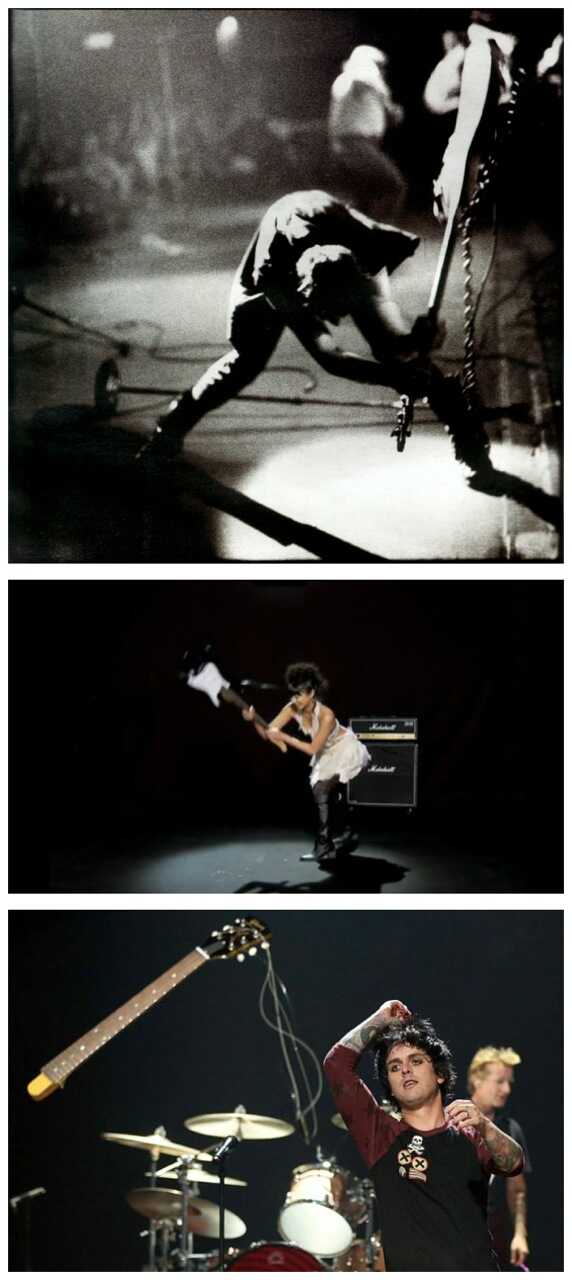
There has even one commercial attempt to sell smashable guitars. It’s hard to imagine a product sold to be destroyed in the domain of modern electronics. But I digress…
Getting back to the cockpit analogy: I agree that shared controls are a compelling move toward collaborative environments. I took a class at Meyer Sound to learn CueStation, a terribly-designed, very flexible audio speaker control system. All the students had local copies on their laptops but the software is server-based, so changes on anyone’s system were reflected everywhere simultaneously.
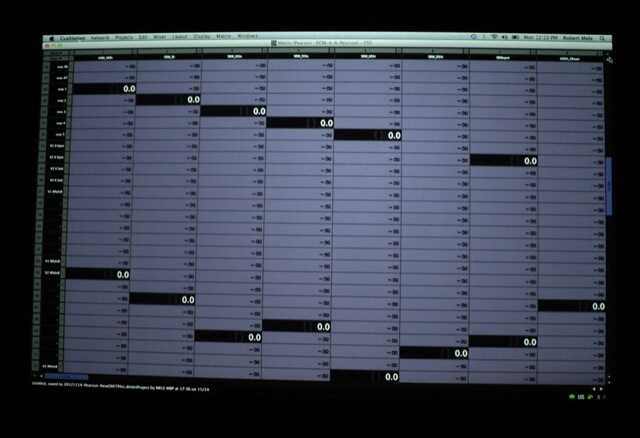
One of the systems connected to a giant screen so that we could all see, and as a result there was some airplane cockpit interactions happening.

Laptop music is infamously dull on stage compared to more traditional instrumentation, so I found some photos of people playing real instruments. In either case, the musicians seem isolated from one another, focused on their own instruments, but their bodies are used very differently. The easiest way to describe the difference is that traditional instruments have a much larger dynamic range of physical expression—how far a hand moves up and down the neck of an instrument, how the player carries or wears the instrument, allowing more motion. Also, the sound itself, at least from the musicians’ perspectives, emanates from the instruments, not from distant speakers. The resonating bodies themselves are more free to roam the space, within limits.

It’s also common to see musicians closing their eyes when they play—something that seems impossible when dependent on touch screens, the mouse, or a keyboard. Tactility is totally lacking. I also found a few images of musicians catching each other’s glance, thinking this would contrast with the self-absorption of laptop musicians, but these moments are often fleeting even in traditional performances.
I wondered… what are some forms of musical expression that laptops don’t lend themselves to? Here are some images from punk rock and heavy metal shows where a laptop would simply never fit in.

The closest I could find was a few videos of people destroying their laptops in homage to the infamous Who/Hendrix instrument smash-ups. This is obviously an extreme example of physically interacting with one’s instrument, but it is still interesting. Even the destruction of a traditional instrument is more “real” than destroying a computer. What did you break when you broke the laptop? You destroyed the world of the screen and all access to it. Breaking a traditional instrument will still yield smaller pieces of sound-making matter, albeit not as uniform or pleasant-sounding. The world still exists and you have not lost your innate ability to use the world around you to make sound. With the laptop dead, you have nothing.

There has even one commercial attempt to sell smashable guitars. It’s hard to imagine a product sold to be destroyed in the domain of modern electronics. But I digress…
Getting back to the cockpit analogy: I agree that shared controls are a compelling move toward collaborative environments. I took a class at Meyer Sound to learn CueStation, a terribly-designed, very flexible audio speaker control system. All the students had local copies on their laptops but the software is server-based, so changes on anyone’s system were reflected everywhere simultaneously.

One of the systems connected to a giant screen so that we could all see, and as a result there was some airplane cockpit interactions happening.
"Everyone is focused on the same thing. Everyone can see what everyone else is making. Everyone can understand how everyone else is making it. Everyone can “jump in” and participate in what others are making."There was a compelling social novelty to it—people saying “Oh! Sorry, excuse me!” or “Hey, who just did that?” I was much more curious to see how that kind of interaction could evolve than to learn the terrible software. This is one of the advantages of the Dynamic Medium in action: networked.